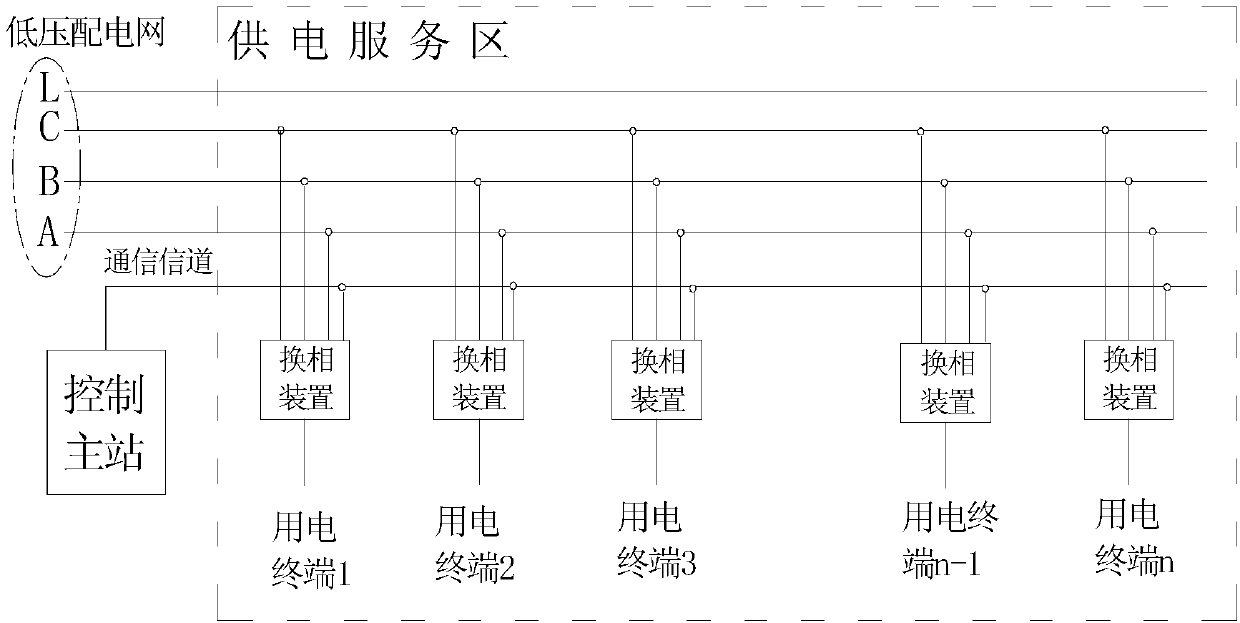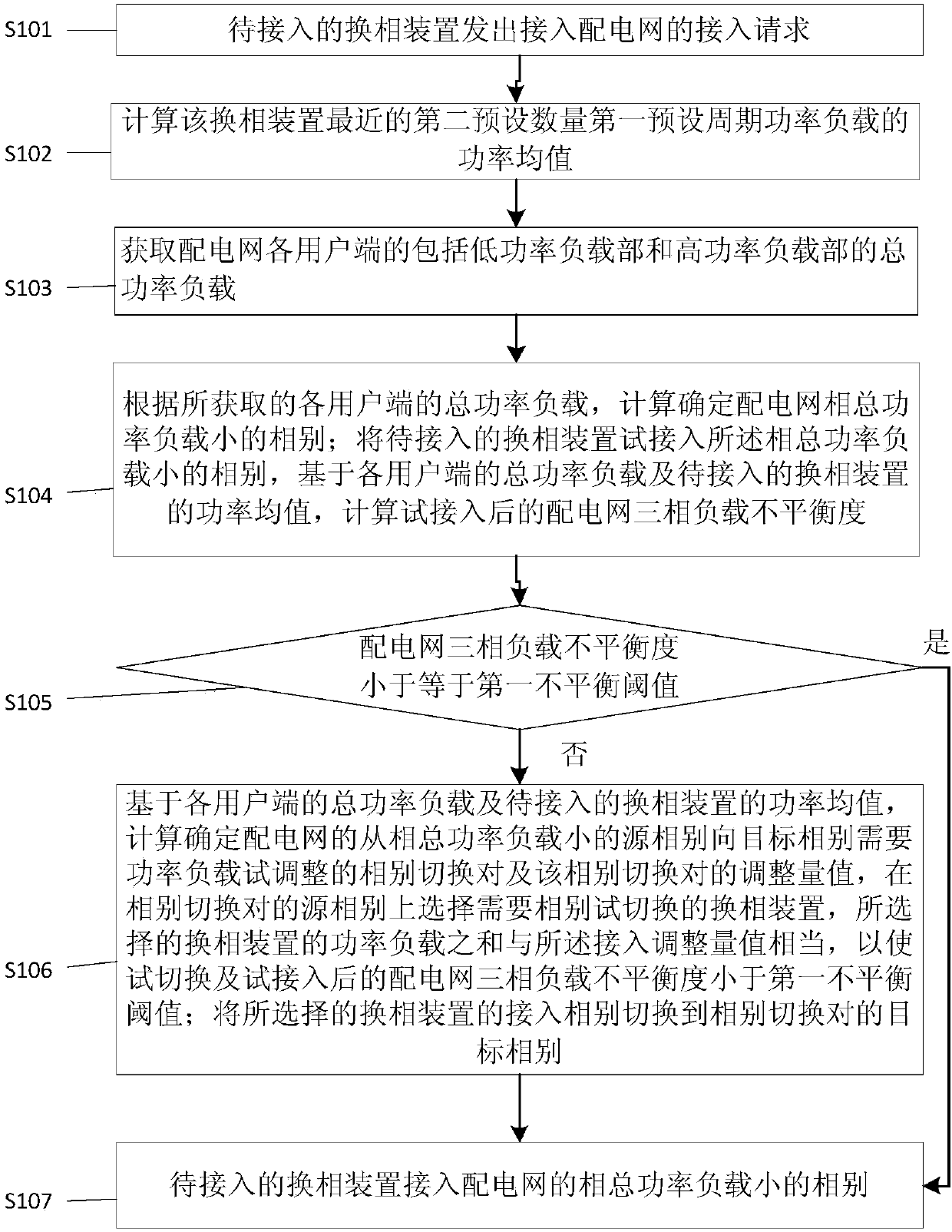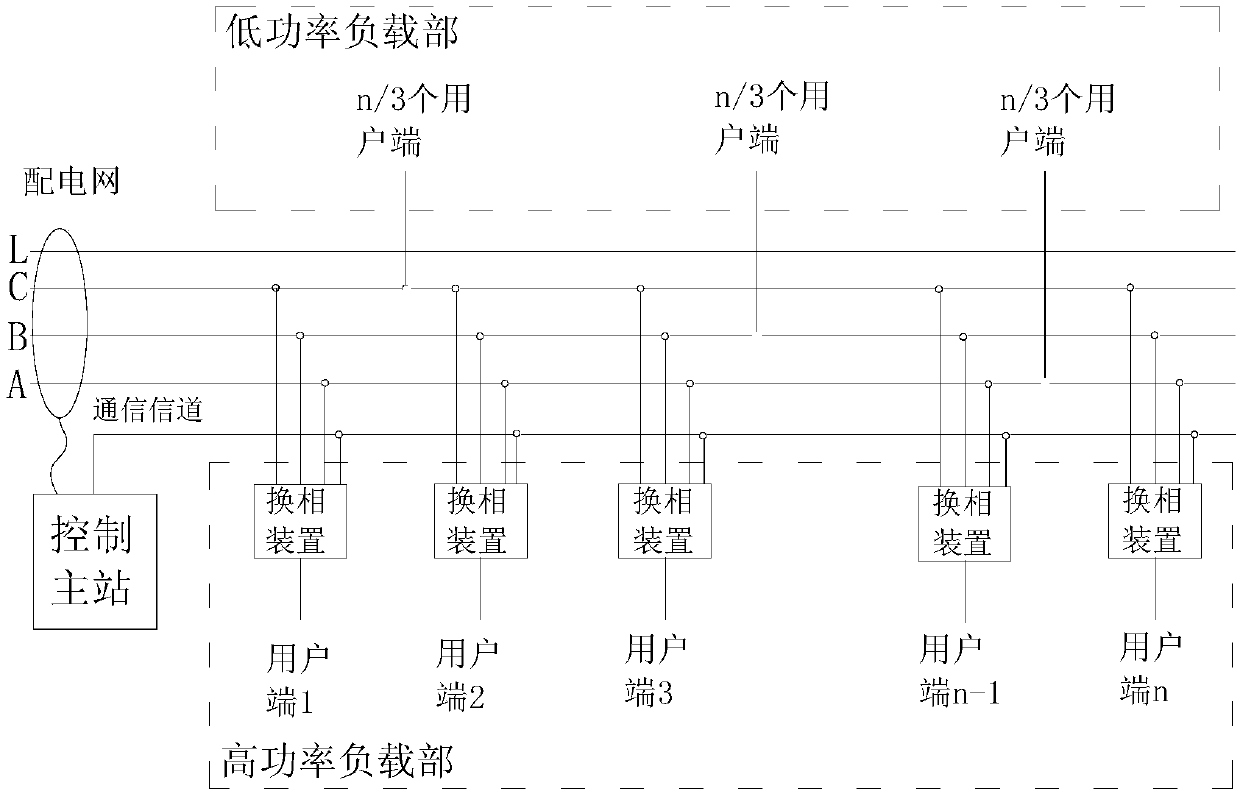Method for connecting power load to distribution network and load balancing method
A power load and distribution network technology, which is applied in the field of three-phase load balancing of distribution network and three-phase load balancing of low-voltage distribution network. Power grid harmonic interference and other problems, to reduce commutation vibration, and to facilitate stable operation
- Summary
- Abstract
- Description
- Claims
- Application Information
AI Technical Summary
Problems solved by technology
Method used
Image
Examples
Embodiment approach 1
[0030] A method for connecting a power load to a power distribution network in this embodiment, such as figure 2 , image 3 As shown, the low-voltage output side of the distribution transformer (which can be understood as the distribution network) adopts a three-phase four-wire system and is wired to residential areas to provide electric energy to residential users. The power load of each residential user (referred to as the user end) is classified into a daily low power load part and a high power load part. The low-power load part mainly includes power consumption of low-power load devices such as daily lighting, refrigerators, washing machines, gas water heaters, and gas cookers, such as load devices with power ranging from tens of watts to two to three hundred watts. The low-power load part is directly connected to one of the phases of the distribution network, and evenly connected to the three phases of the distribution network according to the number of users. The numbe...
Embodiment approach 2
[0062] During the three-phase load balancing process of the distribution network, when the existing technology selects the phase commutation device that needs to be switched separately, it does not consider the difference in the type of the load device powered by the phase commutation device, resulting in built-in magnetic moving parts ( Such as the load device of the motor) produces commutation vibration, emits noise, and cannot run stably.
[0063] In order to overcome the above problems, this implementation mode provides a three-phase load balancing method for distribution network, the main design points of which are as follows: Figure 4 shown, including the following steps:
[0064] S201. Acquire the total power load of each user end including the low power load part and the high power load part; the total power load includes the power load value of the low power load part of the user end, the access phase difference, and the The power load value and access are different...
specific example 1
[0076] In order to enable those skilled in the art to better understand the technical solution of Embodiment 1 above, an application example is given below to further illustrate the method of how the above-mentioned commutation device to be connected is connected to the distribution network. The power load at each user end includes a low-power load part and a high-power load part. The low-power load part is directly connected to one of the phases of the distribution network and evenly distributed on the three-phase lines of the distribution network, such as image 3 As shown in Table 4, the high power load part is connected to one of the phases of the distribution network through the phase commutation device. For the convenience of description, take 12 user terminals as an example, the low-power load parts of the 12 user terminals are directly connected to the distribution network, and each phase line is respectively connected to the low-power load parts of 4 user terminals, as...
PUM
 Login to View More
Login to View More Abstract
Description
Claims
Application Information
 Login to View More
Login to View More - R&D Engineer
- R&D Manager
- IP Professional
- Industry Leading Data Capabilities
- Powerful AI technology
- Patent DNA Extraction
Browse by: Latest US Patents, China's latest patents, Technical Efficacy Thesaurus, Application Domain, Technology Topic, Popular Technical Reports.
© 2024 PatSnap. All rights reserved.Legal|Privacy policy|Modern Slavery Act Transparency Statement|Sitemap|About US| Contact US: help@patsnap.com










